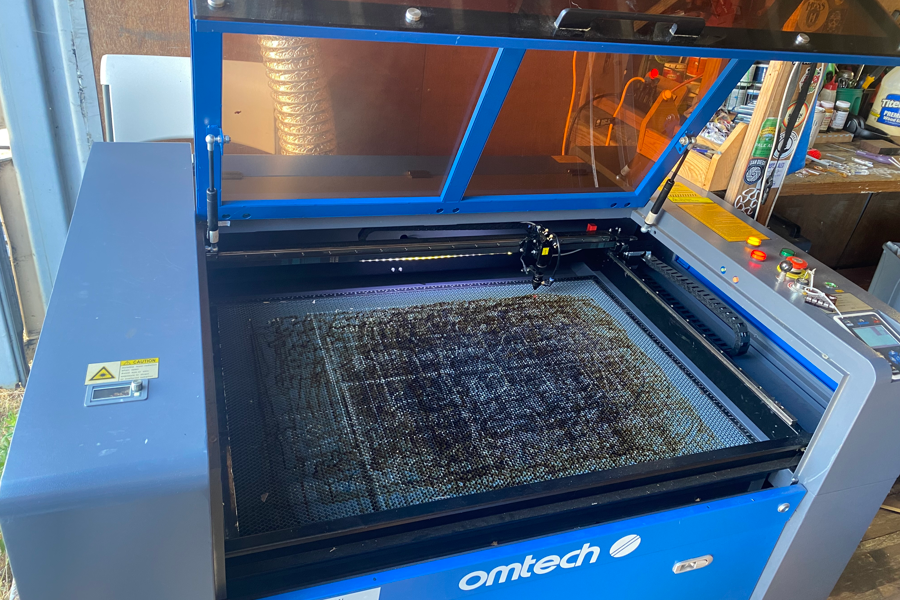Materials You Can Cut with a Laser Cutter
1. Wood
Laser cutters can cut and engrave various types of wood, including plywood, MDF, and hardwoods like maple and cherry. Always ensure the wood is untreated, as certain treatments can release harmful chemicals when burned.
2. Acrylic
Acrylic is a popular material for laser cutting due to its clean cuts and polished edges. Both cast and extruded acrylic can be used, though cast acrylic offers better engraving results.
3. Paper and Cardboard
Thin paper, cardstock, and cardboard are easily cut by laser cutters. These materials are great for prototyping, creating custom packaging, and making intricate paper crafts.
4. Leather
Natural leather can be cut and engraved with a laser cutter. It's important to avoid synthetic leathers, as they can contain PVC, which releases toxic fumes when cut.
5. Fabric
Many fabrics can be cut with a laser cutter, including cotton, felt, and polyester. Always test a small piece first to ensure the fabric cuts cleanly without burning or melting.
6. Rubber
Certain types of rubber, such as laser-safe rubber, can be cut and engraved. Always verify the material is laser-safe to avoid hazardous fumes.
7. Plastics
Several plastics, including ABS and Delrin, can be cut with a laser cutter. Ensure the plastic is free from additives like PVC that can produce toxic fumes.
Materials You Should Never Cut with a Laser Cutter
Cutting the wrong materials can not only damage your laser cutter but also pose serious health risks. Here's a list of materials you should never cut:
1. PVC (Polyvinyl Chloride)
Cutting PVC releases chlorine gas, which is extremely toxic and corrosive. It can damage your machine and harm your health.
2. Polycarbonate
Polycarbonate doesn't cut well with laser cutters and often results in a burnt, charred mess. It also releases toxic fumes.
3. ABS (Acrylonitrile Butadiene Styrene)
While some plastics can be cut safely, ABS is not one of them. It melts rather than vaporizes, producing a lot of soot and releasing toxic fumes.
4. Fiberglass
Fiberglass contains fine glass particles that can damage your laser cutter and release harmful fumes.
5. Coated Carbon Fiber
Cutting carbon fiber with a laser cutter can release hazardous fumes, especially if it is coated. It also doesn't cut cleanly, resulting in frayed edges.
6. Plexiglas
Although similar to acrylic, Plexiglas often contains additives that make it unsuitable for laser cutting. It can produce toxic fumes and doesn’t cut as cleanly as cast acrylic.
7. Polypropylene Foam
Polypropylene foam melts and catches fire easily, posing a significant fire hazard when used with a laser cutter.
Safety Tips for Laser Cutting
- Always Verify Material Safety: Check material safety data sheets (MSDS) and verify the material is safe for laser cutting.
- Use Proper Ventilation: Ensure your laser cutter is in a well-ventilated area and use appropriate fume extraction systems.
- Monitor the Cutting Process: Never leave your laser cutter unattended while in operation. Always keep a fire extinguisher nearby.
- Regular Maintenance: Keep your laser cutter clean and perform regular maintenance to prevent buildup of residues that can cause fires.
Conclusion
Understanding which materials can and cannot be cut with a laser cutter is crucial for both the longevity of your machine and your personal safety. Stick to safe materials like wood, acrylic, and natural fabrics, and avoid hazardous ones like PVC and polycarbonate. By following these guidelines and safety tips, you can make the most out of your laser cutting projects while ensuring a safe working environment.

